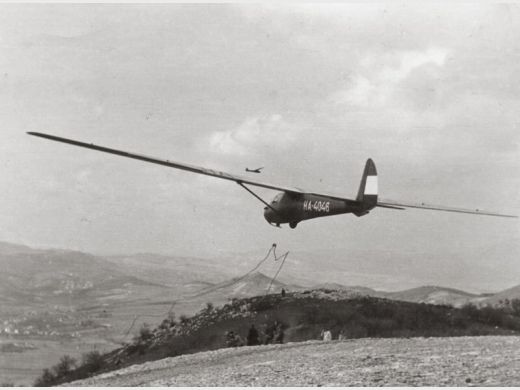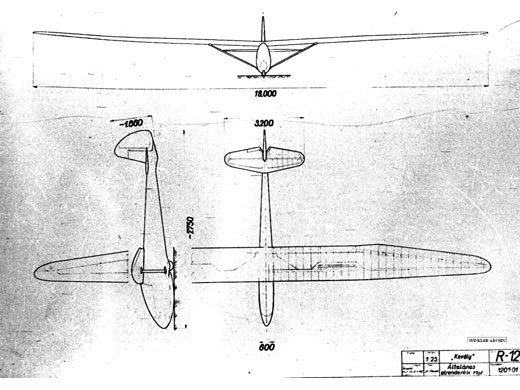| Histoire résumée | Premier vol : 1 avril 1941
The R-12 Kevély had been appeared at the same time as the R-11b Cimbora. According to the instruction system of the National Aviation Foundation pilots were to fly R-09 Pilis training glider after finishing their basic instruction on standardized basic school gliders of R-07a Tücsök and R-07b Vöcsök. However to learn the tricks in performance flying called for a glider having better performance than the Pilis. In the fall of 1939 the Hungarian Aero Association ordered a single seater performance glider suitable for cloud flying with robust structure at the Aero Ever Ltd. in Esztergom.
The R-12 Kevély was designed by Ernõ Rubik, who - to serve novice soaring pilots - developed a robust structure even loosing a bit of performance in the process. The prototype first flew at April, 1941.
She was a stable glider with very pleasant handling in thermals. She climbed steadily with 55-60 km/h flying speed in 15-16 sec. circles. If her pilots lost control in cloud, it was easy to initiate a spin. She rotated in spin slowly and did not exceed the speed of 55 km/h. Moving the controls to neutral positions, the glider assumed normal circling in the same direction as the rotation, loosing only 150 m during this manoeuvre. This feature made the practice of cloud flying safe. Pilots one after another gained new altitude records in 1943 with this glider, . In 1943 János Stolte achieved a new Hungarian height gaining record with 4083 m climb, then Béla Bollman breaked it with 4273 m, then Pál Vojnits breaked it again with 5053 m. A series of cross country flights over 100 and 200 km distances, and a 312 km flight proved the performance capabilities of this glider.
25 R-12 gliders were built by Aero Ever, and in 1944 another 8 by the Aircraft Factory of Transylvania. The glider were also built by workshops of aero clubs. Altogether cca. 50 R-12 Kevély were built before the end of WWII. The last Kevély were scrapped in 1951. |



